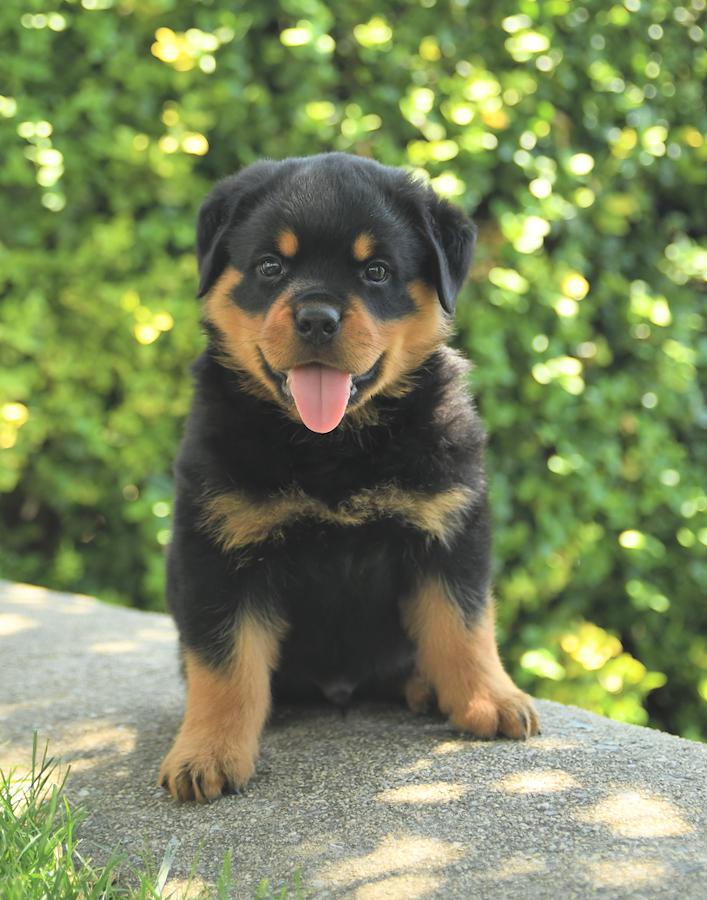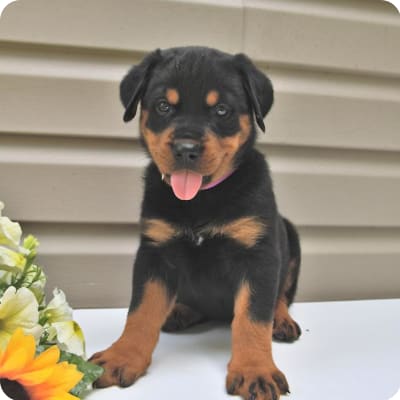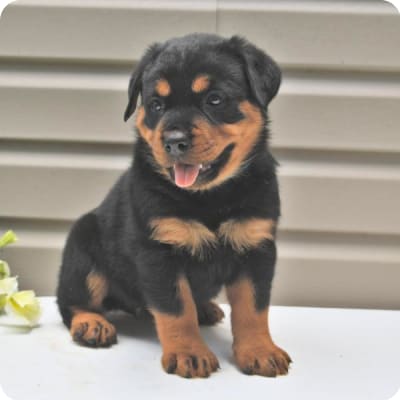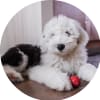Rottweiler Puppies

A sweet, devoted, and playful breed
Despite their reputation, Rottweilers are loving, affectionate, and confident family dogs. They are large, muscular, and courageous, but not overly aggressive. Early training and socialization make Rottweilers very desirable family dogs.
Rottweiler At a Glance




Rottweiler At a Glance
- Size: 22"-27", 85-130 lbs.
- Lifespan: 10-11 years
- Energy Level: medium
- Coat: Short, smooth, and shiny
- Shedding: moderate
- Hypoallergenic: No
- Dog Group: Working
- Common Nicknames: Rottie
Rottweiler Breed Guide
Learn More About Rottweilers


